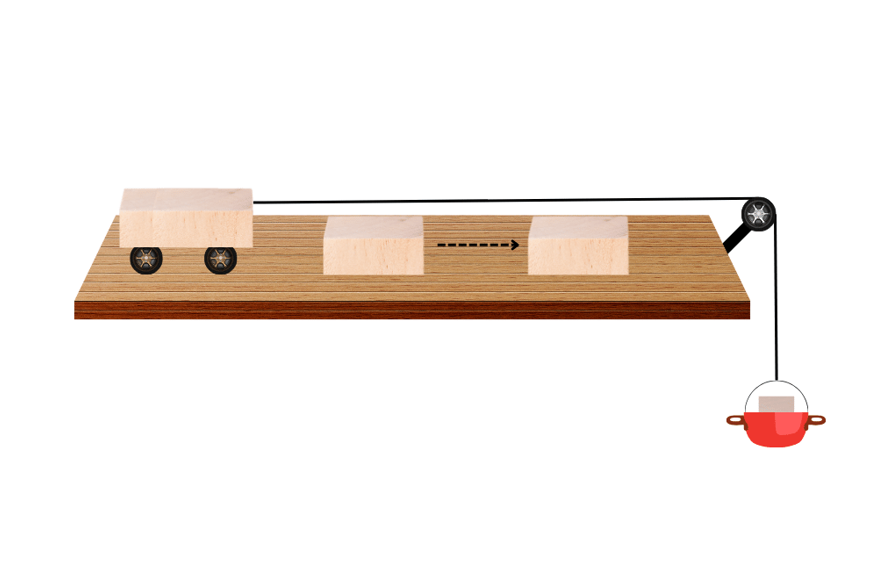7. Complete Activity 10.7 (Page 117).
• Set up the apparatus as shown in Fig. 10.5.
• Place a wooden block of known mass in front of the trolley at a convenient fixed distance.
• Place a known mass on the pan so that the trolley starts moving.
• The trolley moves forward and hits the wooden block.
• Fix a stop on the table in such a manner that the trolley stops after hitting the block. The block gets displaced.
• Note down the displacement of the block. This means work is done on the block by the trolley as the block has gained energy.
• From where does this energy come?
• Repeat this activity by increasing the mass on the pan. In which case is the displacement more?
• In which case is the work done more?
• In this activity, the moving trolley does work and hence it possesses energy.
Answer:
Aim: To investigate whether increasing the mass on the pan results in greater displacement and conclude based on that.
Materials required: Trolley with wheels, wooden block, stop, string, wheel, support, two masses (ones lighter and one heavier), table.
Procedure: (i) With the materials listed, set up the apparatus shown.

(ii) Place the wooden block a fixed distance away from the front of the trolley.
(iii) Fix the stop on the table such that the trolley stops after hitting the block.
(iv) Now place the lighter mass on the pan such that the trolley starts moving. Note what happens to the block.
(v) Now repeat the activity by placing the heavier mass on the pan. Note what happens to the block.
Observations:
- In case of the lighter mass, the trolley hits the wooden block and displacement of the wooden block is lesser.
- In case of the heavier mass, the trolley hits the wooden block and displacement of the wooden block is greater.
Conclusions:
- In case of the lighter mass, the kinetic energy of the lighter mass and hence that of the trolley is lesser. Hence, the work done by the trolley on the block is lesser, as is indicated by the lesser displacement of the block.
- In case of the heavier mass, the kinetic energy of the heavier mass and hence that of the trolley is also more. Hence, the work done by the trolley on the block is more, as is indicated by the greater displacement of the block.
- We conclude that an object with greater kinetic energy does more work.
“• Set up the apparatus as shown in Fig. 10.5.
• Place a wooden block of known mass in front of the trolley at a convenient fixed distance.
• Place a known mass on the pan so that the trolley starts moving.
• The trolley moves forward and hits the wooden block.
• Fix a stop on the table in such a manner that the trolley stops after hitting the block. The block gets displaced.
• Note down the displacement of the block. This means work is done on the block by the trolley as the block has gained energy.
• From where does this energy come?
• Repeat this activity by increasing the mass on the pan. In which case is the displacement more?
• In which case is the work done more?
• In this activity, the moving trolley does work and hence it possesses energy.” – Solved.
Related Links:
Solution to Activity 10.1
Solution to Activity 10.2
Solution to Activity 10.3
Solution to Activity 10.4
Solution to Activity 10.5
Solution to Activity 10.6
Solution to Activity 10.7
Solution to Activity 10.8
Solution to Activity 10.9
Solution to Activity 10.10
Solution to Activity 10.11
Solution to Activity 10.12
Solution to Activity 10.13
Solution to Activity 10.14
Solution to Activity 10.15
Solution to Activity 10.16
Solution to Activity 10.17
Solutions to Chapter 10 Work and Energy


